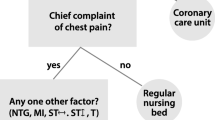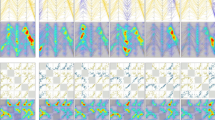Abstract
Decision support tools are designed to improve a user’s ability to take complex decisions and the choice of presentation format is highly relevant to this. Many papers have demonstrated a link between graphical format and decision choice but there has been less evaluation within the context of complex decision making and uncertainty. This study examines the impact of data representation (a) within a univariate and continuous choice decision context and (b) within a multivariate context with discrete choices. Participants in each study were randomly allocated to different display conditions and the impact of the display on their performance recorded, in (a) accuracy of the response and (b) the ease of decision making and comfort with the decision choice. The results suggest that while it is possible to identify graphical representations that produce better decision responses in a single-variable problem scenario this is not necessarily true in a multivariate discrete-choice situation.
You have full access to this open access chapter, Download conference paper PDF
Similar content being viewed by others
Keywords
- Visual representation
- Graphical representation
- Decision task
- Complex decision-making
- Non-expert user
- Uncertainty
1 Introduction
Decision Support Tools (DST), defined in their widest sense, exist to support and where possible, improve, decision making. Many real life decisions and particularly those in disciplines such as health, agriculture and financial management are highly complex, multivariate and are taken under conditions of risk and uncertainty. Taking the wrong, or sub-optimal decision may be inconvenient, financially costly or in extreme cases have long lasting health implications. It is particularly important therefore that the information displayed to the decision maker is as clear as it can be. Many modern DST make excellent use of mathematical models to support decision makers in evaluating the implications of choice decisions. The experience of the user in relation to the format of the output from these models may however have an impact on the quality of the decision made.
2 Literature Review
While experts within the field may be familiar with model outputs those called upon to make decisions based on them may not be. In medicine for example, patients with a range of educational backgrounds are becoming increasingly involved in the clinical decision process [1].
Images and graphical representations can reduce cognitive load and increase the efficient processing of information [2] making data more accessible. The nature of the graph employed also has a determining impact on the outcome. Elting et al. [3] demonstrated that in deciding whether or not to continue clinical trials physicians were influenced more by the graphical format than the data.
In an early approach to the type of systematic research that some more recent authors call for [4] Ibrekk and Morgan [5] compared a range of graph types in supporting the decisions of non-experts in conditions of uncertainty. They concluded the best representation depended on the task and hypothesised that the best option might be a combination of cumulative probability density and probability density graphs. The current study tests their hypothesis and then goes on to explore the impact of display type in a more complex, multivariate decision context.
3 Study 1
Methodology
Forty-two non-expert participants (22 males, 20 females) randomly assigned to display conditions were shown graphical displays of meteorological data and asked to judge the likelihood of snowfall and advisability of travel. Six conditions were tested, the five most successful graphical types from the original Ibrekk and Morgan study (bar/column, pie, horizontal shaded probability density, traditional probability density, cumulative probability) and the combination graph Ibrekk and Morgan proposed but did not test (Fig. 1 and Table 1).
Results
Participants did well estimating the amount of snow using the pie chart, shaded graph, probability density graph, and the combined cumulative probability and probability density graph. Chi-square analysis showed a significant difference in the best estimates among the different types of graphs (χ = 45.9, d.f. = 5, p < .001). There were also significant differences among the graphs for the responses to the probability of having more than a certain amount of snow (χ = 39.4, d.f. = 5, p < .001 and the probability of the amount of snow being between two amounts (χ = 33.7, d.f. = 5, p < .001).
4 Study 2
Methodology
This study explored the performance of bar, column and line graphs within more complex symbolic decision contexts, with discrete decision choices. A total of six scenarios were developed, three medical and three environmental. Participants were asked to imagine that they were the decision maker in each. Three types of decision question were asked within each scenario: What, How Much and When. Each of the 30 participants (16 males, 14 females) saw each type of graph under two different scenarios: the order of the graphs and the questions were randomized (Fig. 2).
As there is often no ‘right’ answer in these decision contexts the measure was the individuals confidence in their decision. In line with the previous findings it was hypothesised that a difference between formats would be found.
Results
A Chi-square analysis of the data collapsed over scenarios revealed no significant differences for responses among the graph types. Participants were equally comfortable with their decisions irrespective of display. Most selected the most favourable outcome (Table 2).
A post-hoc examination of the two types of scenario, environmental and medical did reveal some interesting trends. The data suggested an interaction between graph and scenario type, with a greater degree of confidence being expressed in the environmental scenarios and where a column display was used (Fig. 3).
5 Discussion and Conclusion
The first study, by replicating and extending Ibrekk and Morgan’s original study provides further support for the premise that some formats are better than others in supporting some types of decision task. The second study provides some limited additional evidence that the value of a particular representation is dependent on the nature of the data, and the decision task.
It is possible that a ceiling effect may have masked differences between representation formats in the second study. Cognitive load could have been reduced by the participant’s emotional engagement with the task, each person having some existing belief or experience which provided a cognitive short cut. However no objective measure of the tasks decision complexity was available and this makes it difficult to clearly interpret the results. Future work could explore this possibility.
These studies, particularly the first, support the work of others in identifying differences between graphical layouts in decision quality and decision confidence and underline the impact of decision task on the relative performance of graphical type.
References
O’Connor, A.M., Wennberg, J.E., Legare, F., Llewellyn-Thomas, H.A., Moulton, B.W., Sepucha, K.R., Sodano, A.G., King, J.S.: Toward the ‘tipping point’: decision aids and informed patient choice. Health Aff. 26, 716–725 (2007)
Lipkus, I.M., Hollands, J.: The visual communication of risk. J. Nat. Cancer Inst. Monogr. 25, 149–163 (1998)
Elting, L.S., Martin, C.G., Cantor, S.B., Rubenstein, E.B.: Influence of data display formats on physician investigators’ decisions to stop clinical trials: prospective trial with repeated measures. BMJ 318, 1527–1531 (1999)
Lurie, N.H., Mason, C.H.: Visual representation: implications for decision making. J. Mark. 71, 160–177 (2007)
Ibrekk, H., Morgan, M.G.: Graphical communication of uncertain quantities to nontechnical people. Risk Anal. 7, 519–529 (1987)
Author information
Authors and Affiliations
Corresponding author
Editor information
Editors and Affiliations
Rights and permissions
Copyright information
© 2016 Springer International Publishing Switzerland
About this paper
Cite this paper
Parker, C., DeBusk, K. (2016). Supporting Complex Decisions Through Selection of Appropriate Graphical Layout. In: Stephanidis, C. (eds) HCI International 2016 – Posters' Extended Abstracts. HCI 2016. Communications in Computer and Information Science, vol 617. Springer, Cham. https://doi.org/10.1007/978-3-319-40548-3_11
Download citation
DOI: https://doi.org/10.1007/978-3-319-40548-3_11
Published:
Publisher Name: Springer, Cham
Print ISBN: 978-3-319-40547-6
Online ISBN: 978-3-319-40548-3
eBook Packages: Computer ScienceComputer Science (R0)







